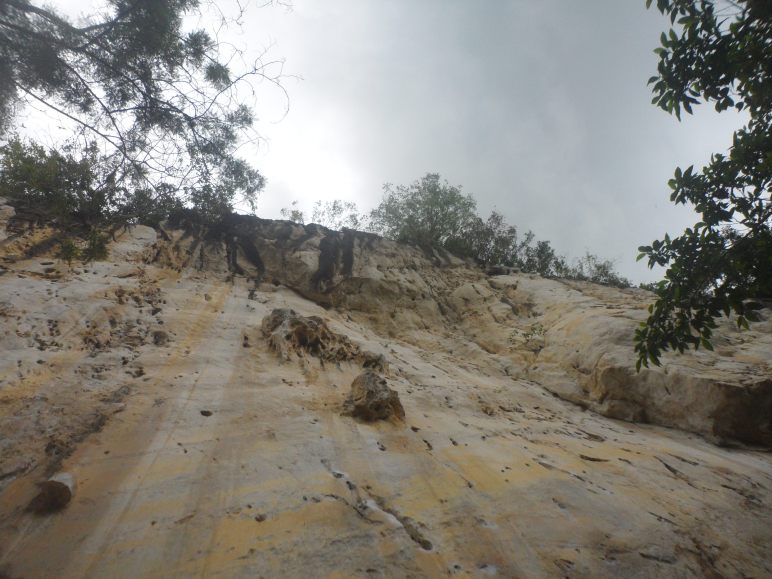by Maria Eleanor E. Valeros, #CebuBloggingCommunity
caption: Presumably a million-year-old gift to a community. The Cantabaco natural limestone formation is not only breeding ground/playground of rock climbers, it is also a reservoir that ensures water supply even in the weak El Nino phenomenon experienced here these days, putting the maximum heat index in Cebu at 39 degrees Celsius.
CANTABACO, CEBU, PHILIPPINES (June 4, 2015) — Rock climbing newbies Cedie Ong and Raymund “Digoy” Acojedo Rodrigo meet local guide Enie Yonson today for the consummation of their “lime lust” at the renowned natural rock formations here.
As assessed by Climb Philippines, an authority in the Philippines when it comes to rock climbing and the accompanying bolting and spotting projects, it was learned that Cantabaco is considered to be the best crag to date in the country.
Offering five areas, with all route possibilities graded 5.11 to 5.13 in the level of technical difficulty, Cantabaco natural wall offers promising rock trips to enthusiasts. The bolted part has reached to some 12 meters or nearly 40 feet. The highest point of the wall is placed at 160 feet, says Climb Philippines in its webpage.
True enough, Cedie and Digoy have their fill here today of adrenaline rush, rock romance, swearing they will be back to finish the fifth area that offers a cliff overhang which to them is not so hard but very technical to tackle for neophytes yet.
Enie, himself, who has rock climbing experience since 1994 said that climbing is not really proving you have the mastery over routes and can do climbathons. “It’s important that you enjoy what you are doing. You may finish half of the route today, complete half tomorrow. One guest even said in jest that’s already equivalent to one route, and that he is happy about his achievement. That’s the spirit. Enjoy what you are doing. You will master endurance later.”
Enie also shared that some climbers come and get frustrated at not arriving at their expectations. “Some swear. Thump on the wall. Some even punch the wall. How could you embrace a sport like this with an attitude like that? Come with a mirthful spirit, completing the routes will come easiest.”
This writer lives in Cantabaco’s adjacent barangay and has her fill of glee upon touching the walls – again – (call it déjà vu!) after decades of being literally detached from what used to be a childhood playground.
In the 80s to the 90s, near these natural limestone formations rush out refreshing waters. An area was developed as a public laundry site where neighbors converge on weekends. This was “social media” then; a wet platform for socialization, back when neighbors know each other so well and immersed in camaraderie.
Today it still is a source for potable water. In fact, the Toledo Water District taps service water in here. However, the number of springs has dwindled. Some crevices where water used to drain have in fact already dried up. Locals have it that detrimental activities such as small-scale to big mining operations may have angered the “elements” that guard the springwells, since mining involves chopping down of trees and blasting of boulders.
Moreover, Enie announced of a convergence come October of rock climbing enthusiasts all over the world to mark an anniversary of the official creation of a federation. This will be a busy time for the area to be used exclusively by fed members.
For companionship services and rates to this crag venerated by the “hardcore rock-ers,” email eleanor.newmedia@gmail.com or message FB: Eleanor NewMedia. ###




